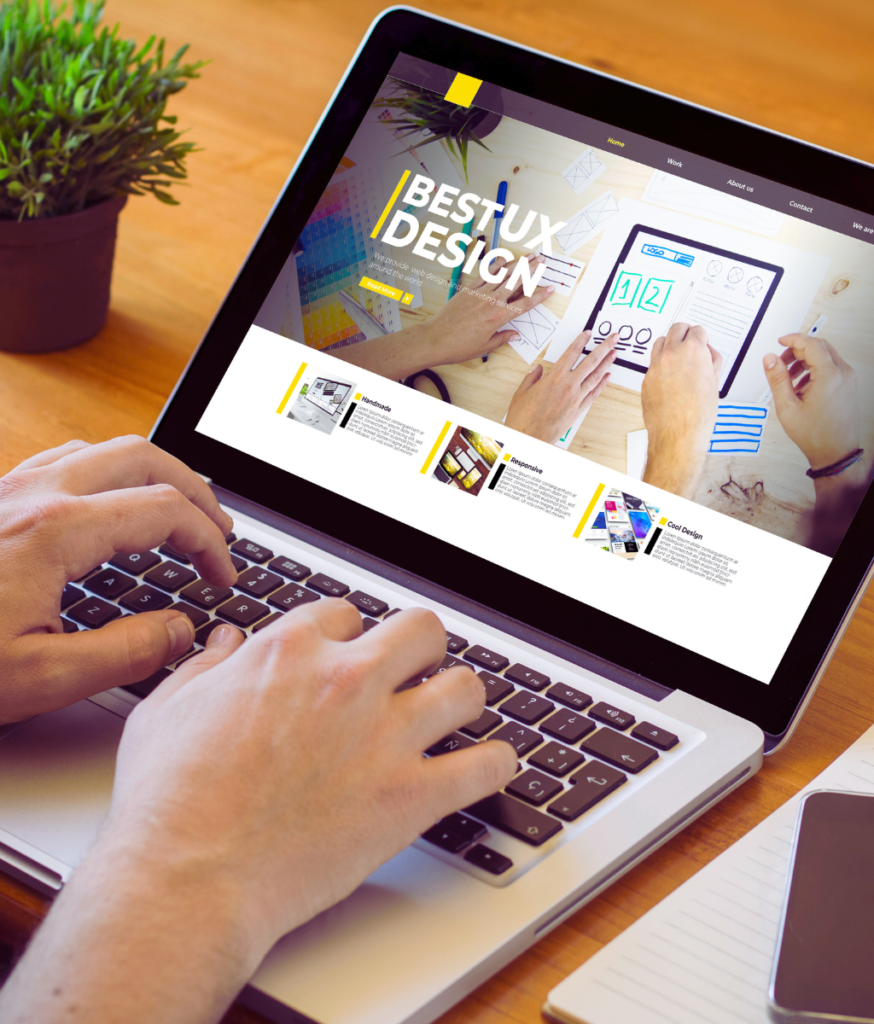How Web Design Pretoria Can Change Your Online Existence
Wiki Article
Best Practices for Producing User-Friendly Internet Layout
In the ever-evolving landscape of internet style, developing an user-friendly interface is critical for engaging audiences and driving conversions. As we discover these foundational concepts, it ends up being clear that effective individual experience layout not just fulfills individual expectations but also sets the stage for deeper engagement.Simplify Navigation
A streamlined navigating system is necessary for enhancing individual experience on any type of internet site. Effective navigating allows users to discover the details they look for rapidly and easily, thereby minimizing stress and increasing the possibility of involvement. A clear design that classifies content practically is paramount; users must intuitively understand where to click for particular information.Utilizing an easy top-level navigating bar, complemented by drop-down menus for subcategories, aids in maintaining an organized structure. It is important to restrict the variety of main navigation links to avoid overwhelming users; generally, 5 to seven alternatives are optimum. Furthermore, employing detailed tags improves clarity, making it possible for users to determine the content of each section at a glance.
Integrating a search feature further improves the navigation experience, specifically for content-rich web sites. This function equips individuals to bypass traditional navigation paths when looking for specific details. Consistent style elements throughout all web pages reinforce knowledge, allowing individuals to browse with self-confidence.
Optimize for Mobile

First of all, take on a receptive style approach that automatically changes the layout and material based upon the display size. This flexibility ensures that customers have a consistent experience throughout tools. Next off, focus on touch-friendly user interfaces by making certain web links and buttons are conveniently clickable, decreasing the demand for zooming.
Moreover, think about the relevance of concise material discussion. Mobile users commonly look for fast information, so employing strategies like collapsible food selections or accordions can improve use without overwhelming the customer. In addition, make certain that typefaces are legible, and photo sizes are maximized for faster loading.
Lastly, test your internet site on different smart phones and operating systems to determine prospective issues. By addressing these components, you will certainly develop an instinctive mobile experience that keeps users engaged and urges them to discover your offerings further - Web Design Pretoria. Focusing on mobile optimization is important for accomplishing an easy to use website design in an increasingly mobile-centric world
Enhance Loading Rate
Loading rate is an important factor that can substantially affect individual contentment and interaction on an internet site. Studies check over here suggest that users anticipate pages to fill in two secs or less; yet threshold, the chance of abandonment boosts substantially. Therefore, enhancing packing speed is essential for retaining visitors and boosting general website performance.To enhance loading rate, several ideal methods ought to be executed. Initially, maximize photos by pressing them without sacrificing high quality, which can considerably decrease data sizes. Additionally, utilize web browser caching to keep copies of documents in your area, enabling faster load times for returning site visitors. Minifying CSS, JavaScript, and HTML data can also aid by removing unnecessary characters and rooms, thus decreasing the quantity of code that requires to be refined.

Use Consistent Design Aspects
Developing a natural aesthetic identification is vital for boosting customer experience on an internet site. Consistent style elements, including shade systems, typography, buttons, and layout structures, develop a unified appearance that assists individuals navigate easily. When customers run into acquainted patterns and styles, their cognitive load is reduced, enabling them to focus on web content instead of deciphering varying layout facets.Utilizing a standardized color scheme strengthens brand acknowledgment and cultivates an emotional connection with users. Similarly, maintaining constant typography-- such as font styles, sizes, and weights-- makes sure readability and contributes to a refined appearance. Furthermore, consistent switch styles and interactive components assist individuals intuitively with the website, boosting use.
Moreover, a cohesive layout aids establish an arranged circulation of details, making it simpler for individuals to locate and digest content. Each web page needs to mirror the exact same style principles to avoid complication and disorientation.
Prioritize Availability
A natural visual identification not only improves navigation yet also sets the phase for focusing on availability in website design. Availability guarantees that all users, consisting of those with disabilities, can engage and browse with a site efficiently. To attain this, internet designers should comply with established guidelines, such as the Internet Material Availability Guidelines (WCAG)Carrying out functions click for source like alt message for photos, key-board navigability, and appropriate shade contrast can considerably improve the click customer experience for people with aesthetic, auditory, or cognitive disabilities. It is vital to utilize semantic HTML to structure content realistically, allowing assistive innovations to analyze and convey details accurately to customers.
Moreover, supplying numerous means of involvement-- such as text alternatives for sound and aesthetic material-- can deal with varied customer requirements. Routine functionality screening with participants that have disabilities can reveal potential obstacles that may not be quickly evident during the layout phase.
Ultimately, focusing on availability not only abides by lawful standards however additionally broadens the potential audience, promotes inclusivity, and boosts overall site use (Web Design Pretoria). By embedding access into the design procedure, programmers can produce a more fair electronic landscape for everyone
Conclusion

As we explore these fundamental concepts, it becomes clear that efficient individual experience layout not just satisfies individual assumptions however also sets the stage for much deeper interaction. Mobile users often seek quick info, so using strategies like collapsible food selections or accordions can enhance use without frustrating the individual. When customers run into acquainted patterns and designs, their cognitive tons is lowered, permitting them to concentrate on material rather than understanding varying layout facets.
In summary, implementing best practices for easy to use web style substantially enhances the general individual experience. Sticking to these guidelines promotes a favorable relationship between users and electronic platforms, ultimately promoting user satisfaction and retention.
Report this wiki page